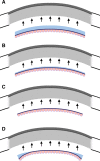Overview of Corneal Transplantation for the Nonophthalmologist
- PMID: 36700069
- PMCID: PMC9835895
- DOI: 10.1097/TXD.0000000000001434
Overview of Corneal Transplantation for the Nonophthalmologist
Abstract
Corneal transplant is a procedure that aims to replace dysfunctional corneal tissue with a transparent graft and is one of the most widely performed transplant surgeries, but its public and professional awareness is low outside of ophthalmology. Corneal tissue consists of 5 major layers that serve to maintain its structural integrity and refractive shape: the epithelium, Bowman's layer, the stroma, Descemet's membrane, and the endothelium. Failure or irreversible damage to any layer of the cornea may be an indication for corneal transplant, and variants of this procedure may be full thickness or selectively lamellar. Complications related to corneal transplantation may occur anywhere from during surgery to years afterward, including rejection, dehiscence, cataract, and glaucoma. Complications should be managed by an ophthalmologist, but other physicians should be aware of prophylactic medications. Topical immunosuppressants and steroids are effective for preventing and treating rejection episodes, whereas there is little evidence to support the use of systemic immunosuppression. Eye protection is recommended for any corneal transplant recipient. Physicians should counsel patients on corneal donation, especially if outside the United States, where donor tissue is in short supply.
Copyright © 2023 The Author(s). Transplantation Direct. Published by Wolters Kluwer Health, Inc.
Conflict of interest statement
The authors declare no funding or conflicts of interest.
Figures



References
-
- Zirm E. Successful total keratoplasty. Graefes Arch Klin Exp Ophthalmol. 1906;64:581.
-
- Albert DM, Edwards DD. The History of Ophthalmology. Vol 7. Blackwell Science Cambridge; 1996.
-
- Lee SH, Cortina MS, Cruz Jdl. History of the artificial cornea. In: Keratoprostheses and Artificial Corneas. Springer; 2015:13–16.
-
- Tan DTH, Dart JKG, Holland EJ, et al. . Corneal transplantation. Lancet. 2012;379:1749–1761. - PubMed
-
- George AJT, Larkin DFP. Corneal transplantation: the forgotten graft. Am J Transplant. 2004;4:678–685. - PubMed
Publication types
LinkOut - more resources
Full Text Sources

